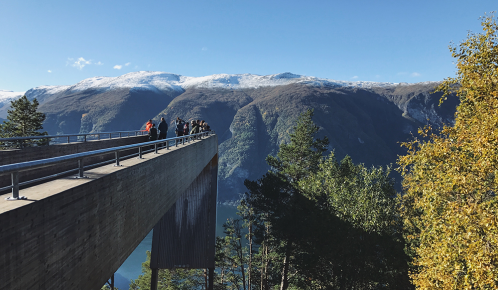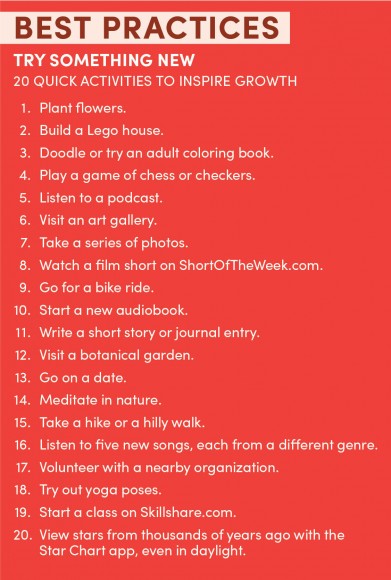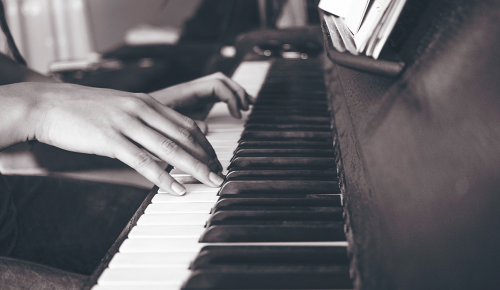What 30 Days of Productivity Taught Me About Finding Time

Article by Lydia Sweatt
When I was 8 years old, I took piano lessons and singing lessons, and I played violin in the school’s symphony – all at the same time. Except for the symphony, I didn’t care for any of those extracurricular activities, but I especially hated learning piano.
Twice a week, always on a school night, my mom would drive me to the piano school, hoping my music teacher would unlock some untapped potential deep inside of me – or at least expose me to something that might become a true passion.
But things didn’t work out the way my mom planned. My piano teacher was stern and classical, and I was young and unfocused. Every practice began with a warm-up and what felt like an interrogation about whether I had actually done my homework. When she asked me to play the assigned pieces, it was clear I hadn’t touched any part of my keyboard or even glanced at the sheet music outside of the practice room. My practice book was filled with notes from her, all expressing disappointment: Please practice! or Redo while counting!
Well, the book was filled until page 32. Not long after that, I quit.
Sixteen years later, I’m a full-fledged adult with bills, very little free time, and just enough youthful indiscretion to blow my tax return on a MacBook. My old laptop had stopped working, and at first the MacBook was a simple upgrade. That sleek machine soon became much more, mostly because it came with an addictive music-production program called GarageBand.
As much I wanted to hide from my strict piano teacher when I was little, I couldn’t deny my love for music. GarageBand sucked me into a world of quantizing drum patterns and transitions from bridges to choruses – some mesmerizing blend of art and science. I spent hours transfixed by the music I could make.
But for all of that musical inspiration, I didn’t even consider getting back into piano, even though it’s the main instrument in most modern music production. Oddly enough, I didn’t even think of touching the keys again until I was confronted with a personal development challenge. It was a simple one: Find 30 extra minutes each day to do something productive and document it. If finding time for personal development is what truly separates achievers from the ranks of the ordinary, the thinking went, then by the end of the month I would be some 15 hours ahead of those who don’t seek to push themselves.
The simplest strategy was to make the most of my lunch break. In a busy working world, it’s always tempting to skip lunch, because that feels more productive. In reality, skipping breaks entirely can have a lot of negative effects. Instead of eating lunch, resting for a few minutes, and getting right back to my day job, my idea was to try to get the benefits of a quick pause from work while still using every minute constructively.
Laura Archer, author of Gone for Lunch: 52 Things to Do in Your Lunch Break , attempted a similar challenge after skipping lunches took a toll on her health. Missing a break here and there didn’t seem like a big deal at first, but then Archer started feeling exhausted all of the time, even on the weekends. She knew something was off. She depended on caffeine more and more. At the office, she found herself surfing the web for vacation getaways.

“The hardest bit is getting away from your desk,” Archer tells me. “I think, for me, as soon as I was out of the building, I didn’t look back. I think it’s just that initial hurdle of being like, ‘Yes, you are going to do this.'”
When I started the challenge, all of the things I wanted to do were quick and practical: grocery shopping, mailing a package to my brother in Japan, flipping through various mobile apps to pay bills. I built a typical to-do list and fragmented it into these daily 30-minute slivers of spare time around lunch.
However, getting these kinds of things done wasn’t particularly exhilarating. Aside from the occasional walk outside, or that one lunch break where I learned about the nuclear deadliness of a compound called “red mercury” via the Stuff They Don’t Want You to Know podcast, none of my new-and-improved lunch breaks seemed especially fulfilling.
To make matters worse, things became busier at work. I didn’t take the time to think about what I wanted to do for lunch other than eat, so the productive part of my breaks always felt rushed. I also wasn’t bringing my lunch to work, so I often had to spend some of what would have been productivity time picking up food. I didn’t have a ton of time to go exploring, so I settled for quick-hit tasks like making phone calls that were long overdue. That wasn’t much better.
Soon, I came to dread my lunch breaks. When I saw the clock nearing noon, I’d sink into my chair and try to think of something new to do on my break. What started as a mission to free up my time had become a burden. At noon, I’d still be sitting there – and the more I sat there, the better my chair began to feel.
“I really don’t want to go out into the world,” I would think to myself. “Has my chair always been this comfortable?”
Most of my tasks had made me feel like I was scrambling for something to do, and now I didn’t want to do anything. This was exactly what Archer had warned me about.
“Normally with my lunch breaks before, I’d go for a walk or sit on a park bench or go shopping, and those were probably my three things I would do,” she says. “You kind of feel a bit weird sometimes. You’re like, ‘I know that I’m empowered by taking my break, but I don’t really feel that different.'”
I was starting to see where I went wrong. A lot of my lunch break decisions were made on-the-spot as a way to simply push me through the challenge. In Smarter Faster Better: The Secrets of Being Productive in Life and Business , Charles Duhigg writes that people fail more often when they make hasty, half-baked decisions. When you rush into something for the benefit of simply having a plan, things don’t really pan out.
Duhigg calls this need for decisiveness “cognitive closure.” It’s a good trait to have when it keeps you from constantly weighing decisions, but not so great when you pick one just for the sake of being productive, he writes.

Unlike cognitive closure, my lack of motivation at lunch had nothing to do with personality. Duhigg writes that scientists see motivation as a skill. That means even when you don’t feel like getting things done, you can get back on track with sheer will. The trick is that motivation has to be practiced in a specific way, Duhigg writes. To fully tap in, you have to feel like you’re calling the shots.
When I think about the moments when I feel totally in control, I think about being creative. I think about music. I think about those times when I’m in flow, too engaged in what I’m doing to worry about coloring inside of the lines – when I feel free to create, without hesitation.
One of the places I get to exercise this kind of control is in GarageBand – or Logic Pro X, the new-and-improved version with a bigger sound library. I can come up with a soothing melody and then layer it with a squeaky analog sound that probably breaks all of the rules of composition, but in those moments, if it feels right, it’s right.
Suddenly, it all clicked for me.
By the time noon rolled around on Day 10 of my challenge, I wasn’t sinking into my chair for the regular what-should-I-do-today brainstorm. Instead, I raced over to pick up some pages from the printer. The sheets were lined with tiny pianos, all of them dotted on various keys that make up the basic chords I wanted to learn.
I walked down to the office parking lot and lifted a huge keyboard from the trunk of my car – the same Casio keyboard I used as a kid before I got bored with my lessons. I set it down next to a shady tree and resumed my failed piano education from a decade and a half earlier.
One by one, I pressed random keys. I remembered being told where middle C is and even the sequence of stepwise notes that snake their way from the white to black keys across the piano. For the most part, my skill level was right where I left it. I still had no idea what I was doing, and that’s not a great feeling.
I poked around for a few minutes. Then, I took one last look at my sheet of chords before folding it up and stuffing it into my pocket. One day I would learn how to play them, I decided, but not today. If I was going to do this, I’d rather know how the chords are built, and that would mean avoiding the shortcuts. Instead of trying to play three or four keys at a time, I’d have to master the individual keys first – and truly fall in love with the journey.
The keyboard gained a permanent space in my trunk. Because I always had it with me (along with spare batteries), I could always find a way to practice. If I had to leave the office for food, I’d have a quick meal and then start practicing on the spot, which sometimes meant propping the keyboard on top of my trunk, right in the parking space. Some days I would find a vertical slab of concrete high enough to stand and play.

With consistent practice (including weekends), it didn’t take long to break through some of the barriers I couldn’t get past as a kid. It took a ton of brainpower at first. I went from feeling mentally drained while playing with two hands to doing it without much thought. By the end of my challenge, I had learned to play some basic practice songs, like “The Woodchuck” and “Hannah From Montana.” Sometimes, I was actually a little shocked at how easily my left hand answered the notes of my right.
Now, when I flip open my MacBook to make a beat, it’s more than just fun. It’s structured. When I load a beat-making program, I don’t use the default audio setting that lets you use the laptop keys to make sounds. I actually prefer hooking up my keyboard. I take the time to wire it to my laptop because now I actually understand the formula behind what happens when I strike a triad chord or play A minor.
I only wish my younger self could have known the joys of playing – and not just the agony of messing up during a recital.
The downside of keeping busy during a designated time of rest is that you don’t always feel like squeezing productivity out of every minute. Sometimes you just want to eat, slowly in my case, and watch a couple of videos on YouTube. Sometimes you just want to sit with your coworkers and talk about how crazy Black Mirror is. Some days you might want to be completely alone, lost in your thoughts.
The more I strung together a list of unrelated, random things to keep me busy, the less I became interested in doing anything at all. Until I decided to home in on one thing and truly work toward an exciting goal, everything else was just something to do.
I’ve decided to keep practicing the piano during my lunch breaks. I don’t think I’ll do it every day, but I keep my keyboard in the trunk of my car, just in case. When I get that urge to practice, I just chew a little faster.
Versions of this article originally appeared on SUCCESS.com and in the October 2017 issue of SUCCESS magazine.
Lydia Sweatt is the web producer for SUCCESS.com. She recently earned a bachelor’s degree in journalism from the University of Texas at Arlington and is a Dallas native. She enjoys painting, a hefty taco, and discovering new music.

